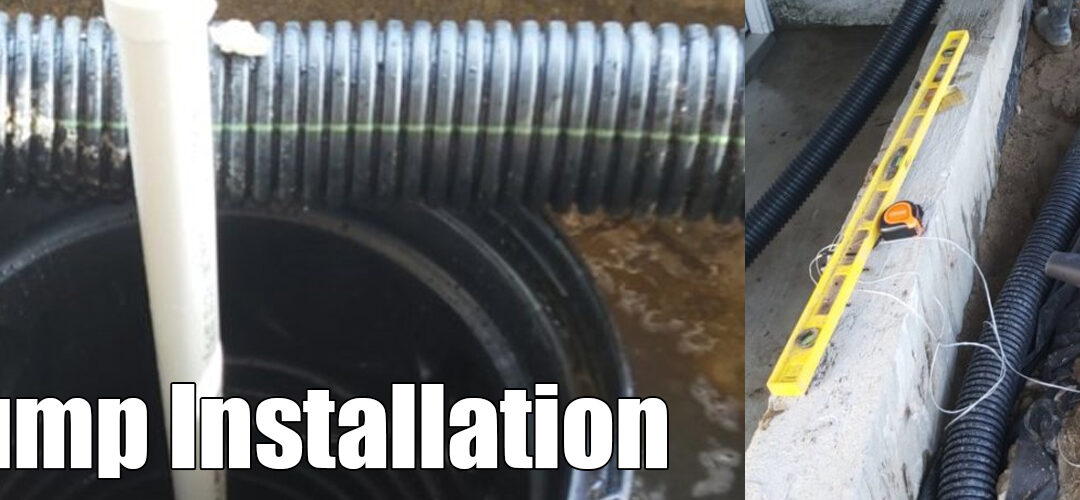What exactly is a sump pump, and what is it used for?
If your basement is prone to flooding, has dampness concerns, or is below the water table level, you should talk to your contractor about sump pump installation. It is a pump used to remove water from the sump basin. Rainfall or groundwater enters the sump basin via the perimeter drains in the basement waterproofing system or by gravity. A sump pump draws water from the sump basin and sends it elsewhere, usually to a dry well or storm drain.
Sump pumps are often hard-wired into your home’s electrical system. Given that the sump basin can overflow if not pumped properly or consistently, it is a good idea to have your pump connected to a battery backup system in case of a power outage. The pressurized water system can occasionally power the pump, and electricity is not needed in this situation.
How can I tell if my sump pump is malfunctioning?
When you notice that your sump pump is overflowing, there is a problem arising from sump pump mistakes you are making. There can be many problems that lead to this happening. In this article, we will explore all the potential reasons that make a sump pump malfunction and the possible solutions.
It is critical to keep the sump pump clear of obstructions and debris. If you see sump pump pit keeps filling with water check that nothing is interfering with the float or the arm switch. The sump pump will run too frequently if the float isn’t working properly.
Keep the pump away from loose gravel, small rocks, or silt. If you must utilize rocks or silt, ensure they are large enough not to pass through the pump’s aperture.
If a plumber, electrician, or other professional repair person has worked on or near your old sump pump, double-check the pit after they’ve departed. They may have needed to unhook the pump, disable the float, or turn off the check valve. A professional will usually remember to reset the sump pump, but you don’t want your basement to flood because you imagined they remembered to change a setting after the fact.
A Blocked Drainage Line
Clogged discharge lines can cause problems at any time of year. You should travel along the buried discharge pipe looking for severe problems and ask questions like,
- “Is the earth still sloping enough to allow the line to drain naturally?”
- “Is there anything blocking the pop-up drain?
- “Is the water flowing out of the discharge line constantly when you flush the sump pump (more on that in the next section)?”
- “Is the water flowing freely to the pop-up? Or does it seep out sooner in the process?”
Remember that if it seeps out, it could indicate a break in the foundation.
Failure to test the sump pump
Like any other mechanical system, a sump pump can wear down or develop problems due to various circumstances. You must test it regularly to ensure that it is functioning properly. We recommend doing this twice yearly, just as cleaning your gutters or checking your HVAC system.
Pour 5 gallons of water into the pit to test your sump pump. Take note of when the float activates the pump. Keep an eye out for the water gently draining and the pump shutting off when the water level falls below the float.
What if nothing happens? Begin by ensuring the pump is connected and the outlet is powered on. Then proceed with the instructions outlined above.
Maintenance Ignorance
Most homeowners are unaware that their sump pumps are malfunctioning until they quit working. Preparing for maintenance at least once a year is critical to avoiding mishaps. Check for loose wiring, listen to the motor, clean out the basin, and test the float switch by pouring water into the sump basin to determine if the pump works. You must also check that the discharge pipes are not clogged and that the water is directed away from your home. Finally, understand when a professional is required.
Failure to Pay Attention to Discharge Pipes
Sump pumps drain water from the basement via a discharge pipe. The pipe is typically installed underground, where tree roots might cause harm. In most circumstances, you won’t know the pipe has broken until you walk into the basement and see everything floating around. If the sump pump is working properly, but you are still experiencing flooding, the discharge pipe is most likely damaged or obstructed. Always test these pipes regularly to ensure they are in good functioning order, and call in a professional if there is a problem.
Failure to Pay Attention to a Sump Pump Motor
You’d be shocked at how many problems homeowners overlook by not paying attention to their sump pump motor while it runs. If the sound is normal and the pump and motor appear to be functioning properly, you should pay attention to where the water should exit. If no water is escaping, you must troubleshoot your sump pump. Water may not be exiting due to a clogged pipe or a stopped valve. Some of these issues are rather simple to resolve, and you can do it yourself. However, if the problem is difficult to identify, consult a specialist.
Related Blog Posts:
- How Long Does the Restoration Process Take for Homes With Water Damage?
- What to Do If Your Home Has Water Damage?
- Signs of Water Damage in the Basement Walls
- Water Damage & Mold: Everything You Need To Know in 2023
- Things You Should Know About Water Damage
- Who Do I Call After My House Has Water Damage Restore?
- What Causes Water Damage to Floors and Walls
Related Services:
Our service areas:
Get A Free Estimate

